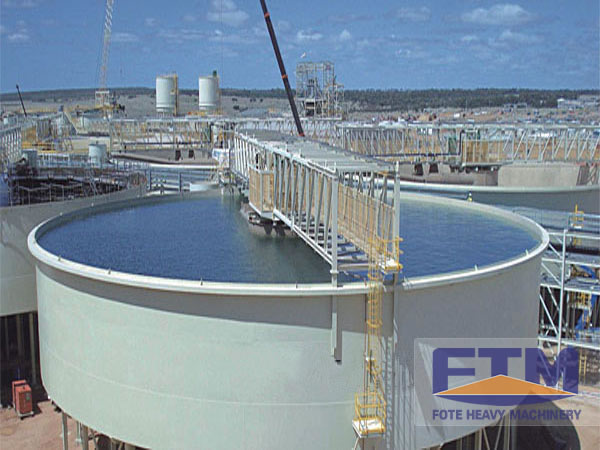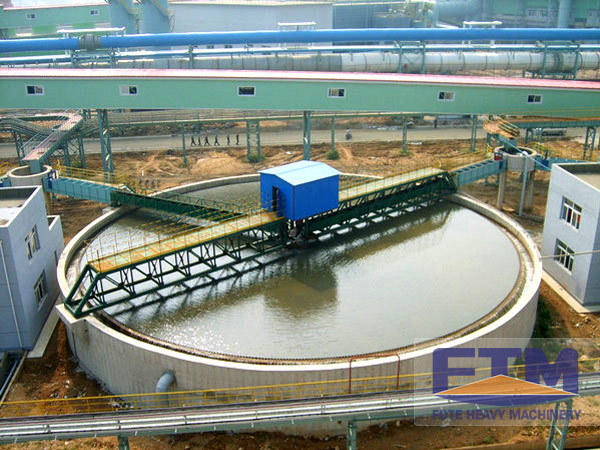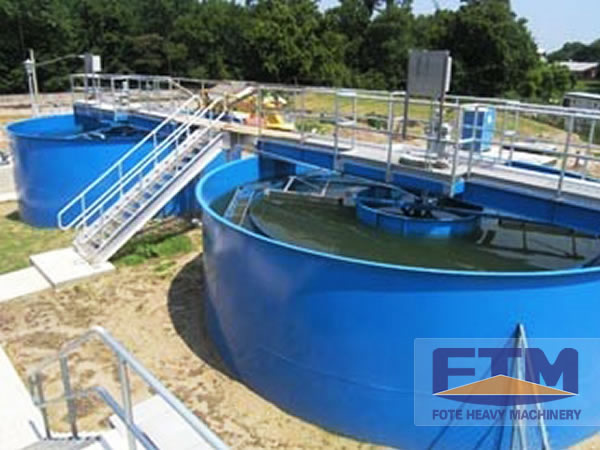NEWS
Common Faults of Thickeners
By: Fote MachineryMarch 22nd,2022
The thickener is one of the commonly used equipment in the concentrator, and plays a pivotal role in the entire beneficiation production line. Therefore, after the thickener fails, it must be solved in time, otherwise it will affect the operation process of the entire concentrator, thereby damaging the economy of the concentrator. income. Next, we will start with three common faults of the thickener, analyze their causes and propose improvement plans for your reference.

Fault 1: The base of the cycloid reducer of the thickener is broken
The main reason is that the thickener runs under heavy load for a long time, which causes the failure of the safety protection device. Once the base of the cycloid reducer is broken, the entire transmission chain from the motor to the rake will fail, causing great damage to the concentrator.
Improvement plan: add safety protection device
During the operation of the thickener, it is necessary to consider the maximum bearing capacity of the cycloid reducer, set the maximum torque, and add a protection device for the thickener, as well as a transmission mode with safe operation.

Fault 2: Failure of the thickener lifting device
The operation of the thickener needs to lift the rake. If the rake cannot be lifted, it means that the lifting device fails (the rake cannot be lifted for a long time and will cause the rake to rust). There are two main reasons for this failure:
1. The matching clearance between the main shaft and the turbine hole is too small. When the thickener is running, the main shaft and the turbine hole generate a large friction force, and there is no sufficient supply of lubricating oil, which will make the rake ability weaker and weaker.
2. The stress surface of the long key connected to the main shaft is uneven. Especially when the thickener is overloaded, the uneven force will cause torsional deformation of the long key, which will be stuck in the keyway, causing the rake to be unable to lift.
Improvement plan:
1. Increase the lifting clearance
If it is because the matching clearance of the hole and shaft is too small, without changing the structure of the lifting device and the positioning of the sleeve, a 3 mm metal pad can be added to the lower end of the sleeve to increase the clearance of the hole and shaft. Reduce the occurrence of cracking accidents on the upper cover of the worm gear of the lifting device.
2. Improve the lubrication method
If the lifting device fails due to insufficient supply of lubricating oil, a high-pressure oil gun can be used for pressure lubrication, and the oil supply pipeline can be modified according to the pressure pipeline.
3. Improve the production and purchase requirements of spare parts
When the rake of the thickener is made, it should be made according to the requirements of the design drawing; in addition, the channel steel should be pressed and formed as much as possible, and the welding is relatively easy to deform, which will greatly reduce the strength and rigidity of the material. When overloaded, it will cause the lifting device to fail.

Fault 3: The volute of the hoisting device of the thickener is broken
During the operation of the thickener, the volute will break due to insufficient lubrication and overload operation, which will increase the loss between the turbine and the turbine rod.
Improvement plan: control the distance between the main body of the hoisting device and the shaft center
During the operation of the thickener, it is necessary to control the distance between the main body of the lifting device and the shaft center to prevent the upper cover of the turbine from being damaged by the upward movement of the shaft center. In addition, it is also necessary to strengthen the daily maintenance and overhaul operations of the thickener.
To sum up, I hope today's sharing can be helpful to everyone. Here, it is suggested that mine owners must choose reliable manufacturers and high-quality equipment when choosing thickeners, which can reduce the failure rate of equipment from the source.

